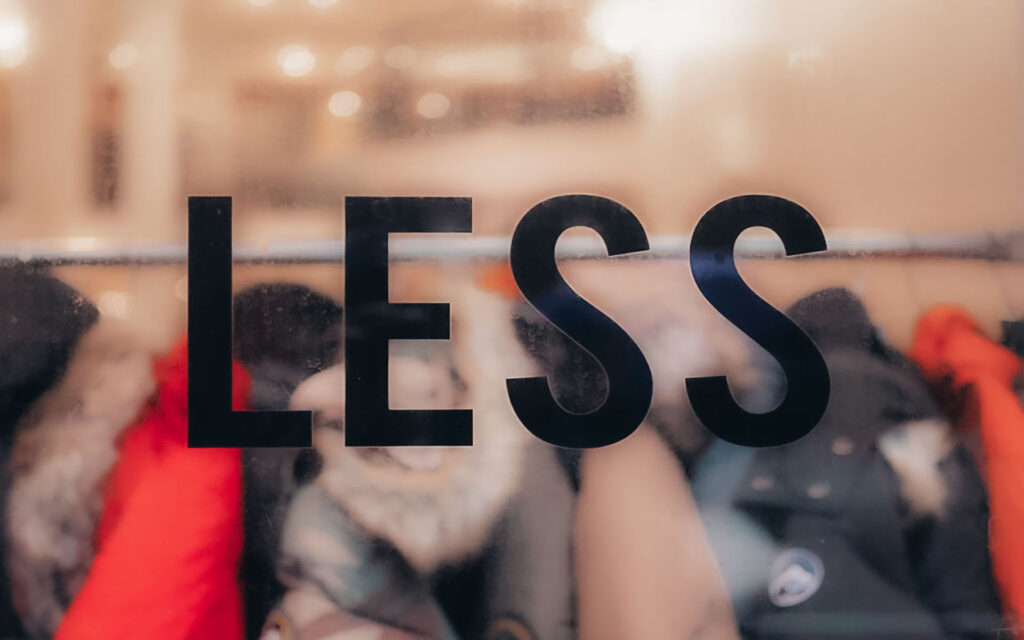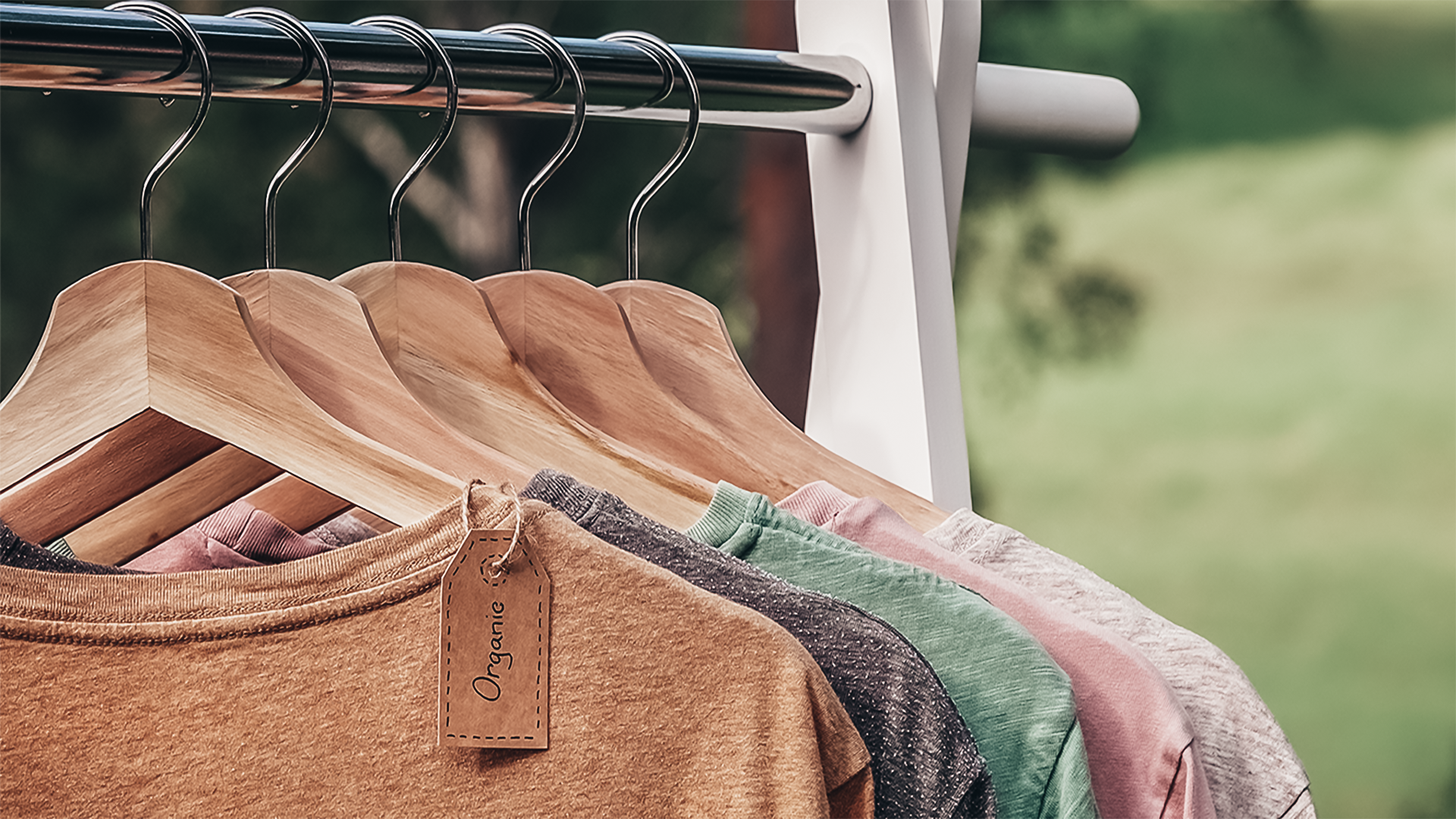It is not news that the fashion industry is one of the most polluting. The impact of fast fashion on the environment has been causing a serious dilemma.
According to research by global management consultancy McKinsey & Company, the textile industry was responsible for some 2100 million metric tons of greenhouse gas emissions in 2018, about 4% of the global total.
The problem with fast fashion is that companies present new items every 15 days. This causes a large increase in production and waste since garments are usually discarded instead of donated.
Europeans consume almost 26 kg of textiles and discard about 11 kg each year. Used clothing can be exported outside the EU, but the majority (87%) is incinerated or landfilled
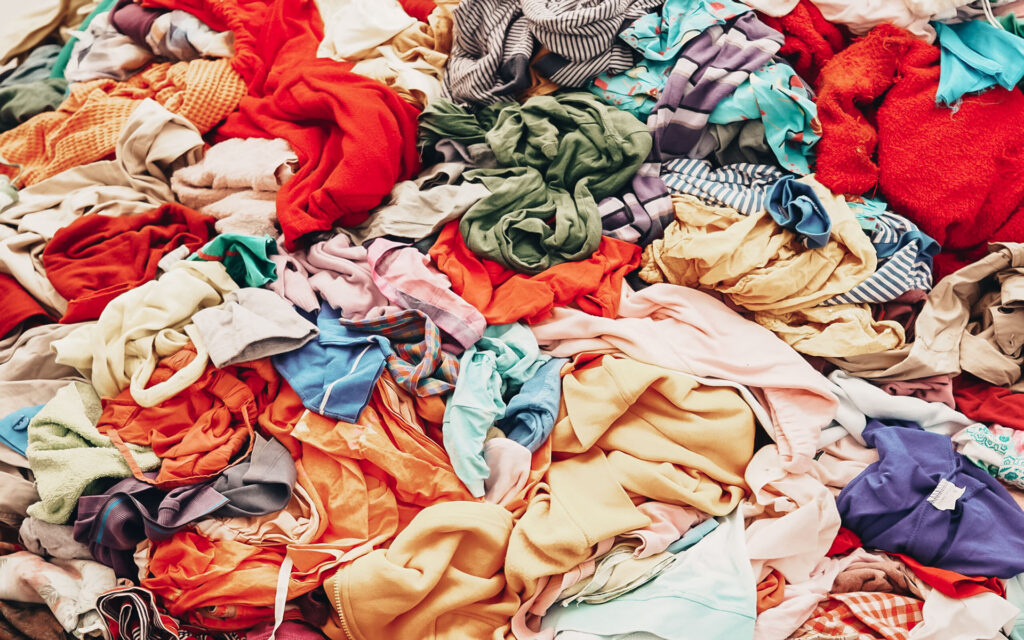
Fighting the damage done
Due to the damage caused to our planet, and to the fact that consumers are today more responsible when choosing a garment, every day there are more firms involved in adopting new solutions to their business model and fighting for a systemic change in the production and consumption of fashion.
Many fast fashion brands are committed to taking a step forward toward a more sustainable model. In addition to creating eco-friendly collections, they are taking other initiatives. They use recycled materials, collect and recycle used garments or even create their second-hand programme.
Committed fast-fashion brands
H&M
The Swedish firm was one of the first to consider that the impact of fashion on the environment should change. It was one of 43 industry firms to commit to supporting the Paris Agreement to curb climate change.
Since 2015, it has partnered with the Ellen MacArthur Foundation, an organization that works to accelerate the transition to a circular economy.
According to Leyla Ertur, Head of Sustainability: “We share the growing sense of urgency with many around the world who recognize that the fashion industry needs to move faster towards circularity and continue to work to develop a fairer, more transparent and traceable supply chain.”
Since 2013, the firm has had the Garment Collection program in its stores around the world.
In 2019, H&M launched a rental service in one of its stores in Stockholm. There you could rent suits from the Conscious Exclusive collection. They also placed a machine called LOOOP that turns old garments into new ones in just eight steps.
In addition, through H&M Take Care, the company gives advice and ideas on how to repair, redo and update your garments to make them last longer.
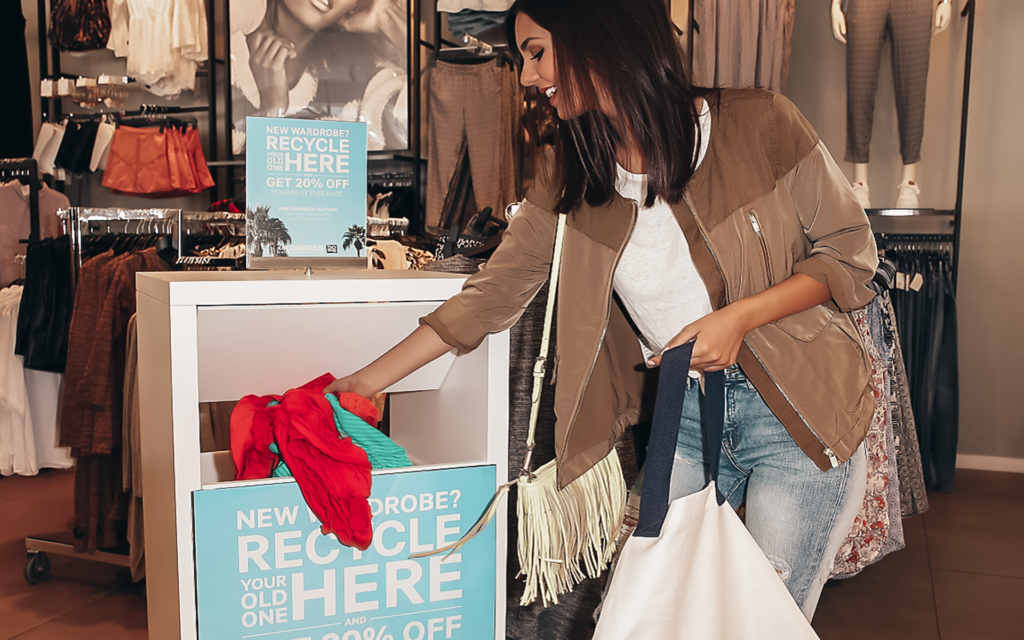
ZARA
One of the Spanish firms of Inditex, the largest fast-fashion group in the world, is moving towards a circular economy model that allows the life cycle of its garments to be extended.
The company says: “Our reuse and recycling programs enable customers around the world to return their worn clothes, helping to reduce waste and consumption of virgin raw materials. Our commitments cannot be fulfilled alone, so we are working closely with our suppliers as well as international organizations and other businesses in our industry to bring about real change together.”
It has reuse and recycling programs allowing its customers to donate their used garments once they no longer need them. In this way, they help reduce waste and the consumption of new virgin raw materials.
Its Sustainability Innovation Hub platform aims to identify and test new technologies, materials, and processes to limit the environmental impacts of its products and help move towards more sustainable solutions.
In 2015 they created the “Join Life” standard as a tool to produce their garments using more sustainable materials and processes. It has three types of labeling depending on the impacts of the materials or processes with which the products have been manufactured:
- Care for fiber: recognizes garments that use materials with a lower environmental footprint compared to conventional ones;
- Care for water: they use innovative technologies that reduce water consumption;
- Care for planet: identifies garments that have been produced using renewable energy in wet processes.
MANGO
The Mediterranean firm has as its motto “sustainability is the only possible way”.
That is why it chooses more respectful materials, encourages processes with less environmental impact, and promotes circular design practices, reducing its carbon footprint.
Its sustainability model is aligned with the Sustainable Development Goals (SDGs) of the United Nations, as well as with the strategy and objectives set by the industry such as the Fashion Pact or International Accord.
It has three main lines of action: Committed to Product, to Planet, and to People
Its mission is to generate a product thinking about its useful life, either through products that are recyclable betting on durability, or using patterns that lead to a lower volume of waste.
In addition, it has defined three circular design strategies that will help them meet their circular goals:
- Give it back to the loop: design garments with a single type of fiber or fewer accessories, to achieve greater recyclability.;
- Extended life: designs more durable garments thanks to the use of materials with certified physical properties, the reinforced construction of the garment, and a timeless design;
- No Waste: maximize the use of the materials used and the reincorporation of textile waste.
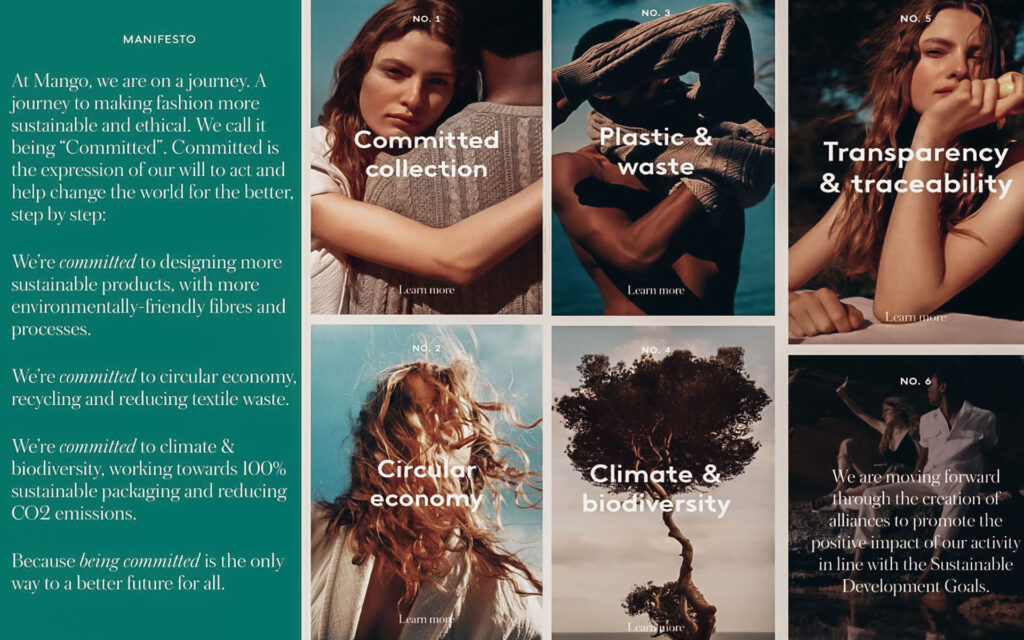
UNIQLO
The Japanese firm has followed the path of sustainability for more than 20 years. It produces garments responsibly and with the commitment to protect the health of the planet and the people who make it up.
Every season they focus on conserving resources, reducing waste, and reducing their environmental impact.
Since 2019, the firm has been committed to phasing out the use of plastic bags in favor of paper ones by reducing the amount of single-use plastic present in stores and product packaging.
The brand has different proposals for its sustainable objective such as the creation of garments from recycled plastic bottles.
The programme RE.Uniqlo recycles used garments to make them new. To do this, the firm collects the garments deposited by customers in its stores for recycling and together with UNHCR and other non-governmental organizations, donate them to the people who need them most around the world.
With another programme called Blue Cycle Jeans, the company eliminates the need to use large amounts of water and reduces manual labor in the fading and wearing process, reducing up to 99% the amount of water used in the jeans finishing process.
PRIMARK
The Irish fast fashion multinational was one of the latest firms to take its step towards sustainability. Last year they launched Primark Cares with the commitment to become a more sustainable and circular company.
Its commitments are divided into three pillars:
- Give garments a longer life since they will have a recyclable design, and will be made with recycled materials or from sustainable sources.
- Protect life on the planet by halving its carbon footprint, eliminating non-textile waste, and working to restore biodiversity.
- Improve people’s lives by earning a living wage for workers in their supply chain, improve their health and well-being, and promote equal opportunities for women.
In addition, they have committed to making all their garments from recycled fibers or materials of more sustainable origin. They halved their carbon footprint across their value chain by 2030.
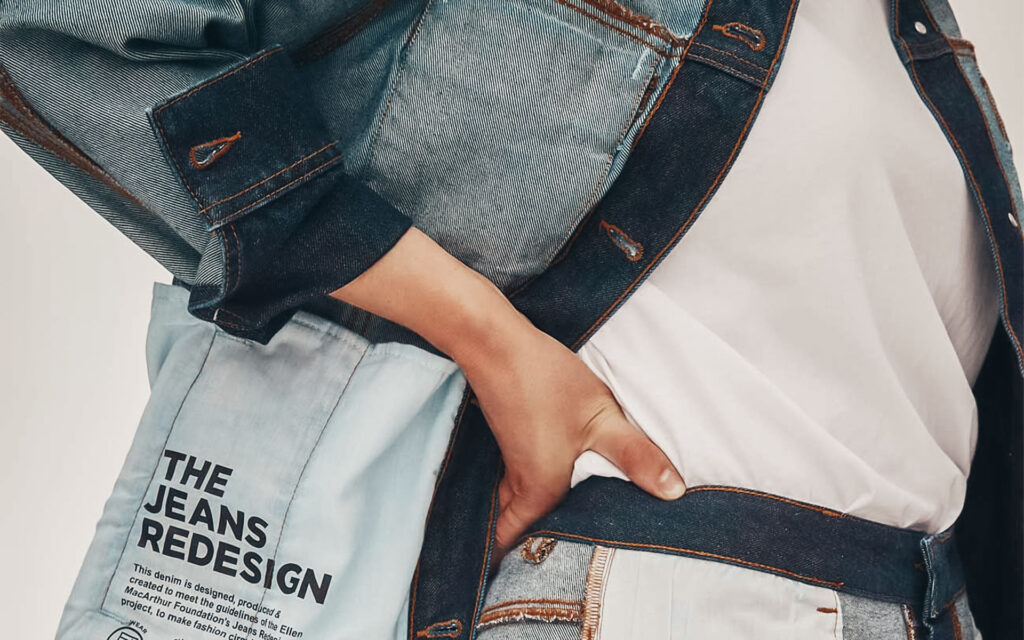
A lot or a little, it all adds up
It is more than positive to see firms act and take another step towards caring for the environment.
These actions are implemented little by little. All brands share the opportunity to take on an important role in making our planet a better place.
Not only is important what the fashion industry is doing on its path to sustainability, but consumers also have to do their part to reduce their footprint.
Therefore, before buying a garment, ask yourself: Do I really need it? Why am I buying it? Will I use it long-term? Do I need a new one or can I buy it second-hand?
